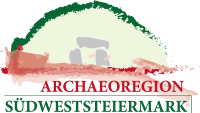
Sometimes referred to as “plague crosses” by the local population, there are still a few wayside shrines in the landscape of the Hengist region. Their actual meaning has been forgotten over the centuries, and yet they are – for the most part – representations of the borders between different areas of regional or local jurisdiction.
The keep around market and town
With the territory of a market or a town there was usually connected the castle keep jurisdiction – as the Styrian lords and countrymen exercised it also on their noble seats and estates. The Burgfried as a peace district initially extended to the area within the fortification walls of a burgher community, but soon beyond. In the keep, the market or town magistrate exercised the lower jurisdiction, some were also allowed to interrogate criminals before handing them over to the district judge for a verdict of life and death. The district judge was not allowed to enter a keep in his judicial capacity. Disturbers of social peace within the walls of the town and market were exposed to public ridicule at the pillory; the historic pillory of the municipality of Wildon is today integrated into the facade of the Old Town Hall. The burghers marked the borders of the keep with wayside shrines, marked wooden stakes or boundary stones, which usually bore the initials of the market or the town and the year of a boundary renewal. Such “Burgfriedsberainungen” (castle keep demarcations) took place at regular intervals. On these occasions, a commission of judges, council members and citizens (old and young) rode and paced the boundaries and met with neighboring landlords to settle any boundary discrepancies. At particularly important points, young people were pulled by the hair or given slaps in the face so that they memorize the border particularly well. The event was concluded with a feast, where a rich menu was offered and specially minted commemorative coins were available. The castle keep cross of Wildon still stands on the road to Neudorf and marks the border of the cadastral commune. The wayside shrines in Neudorf and Stocking (Aug, Hart) were also boundary signs from the early modern period.
Text: Mag. Dr. Gernot P. Obersteiner, MAS

